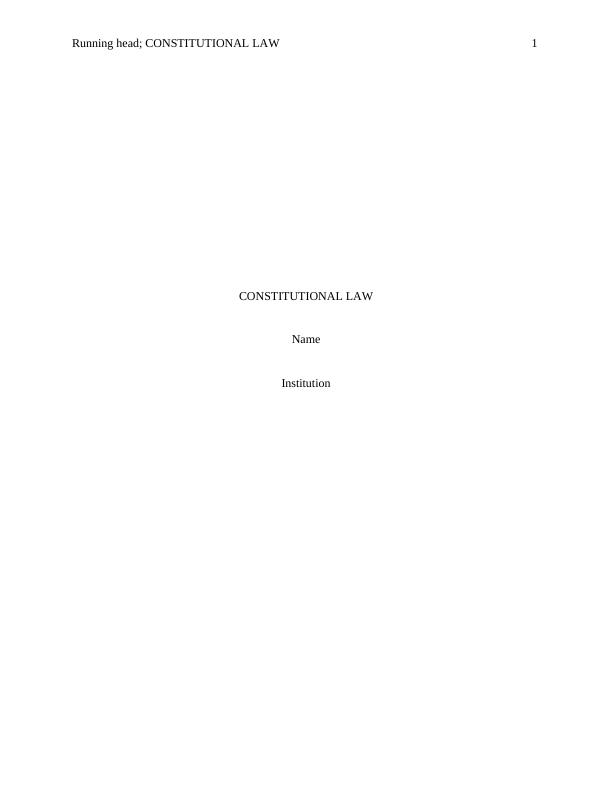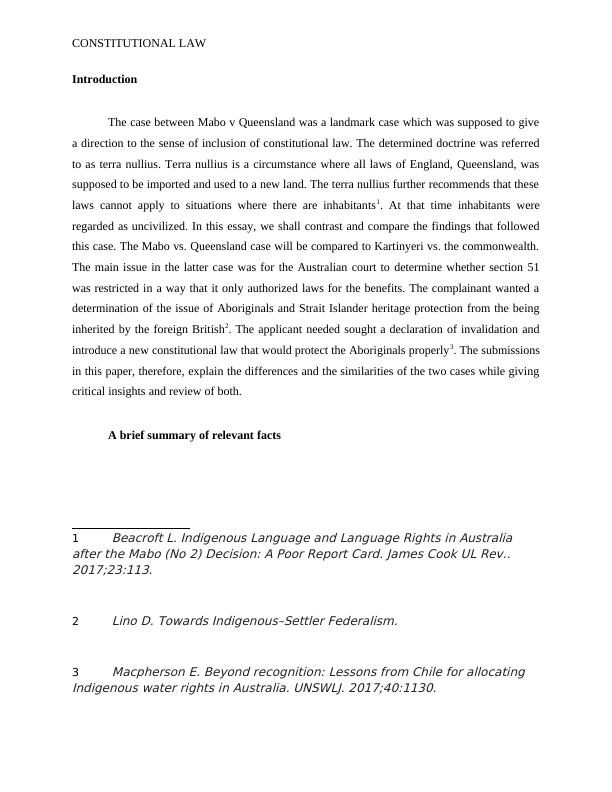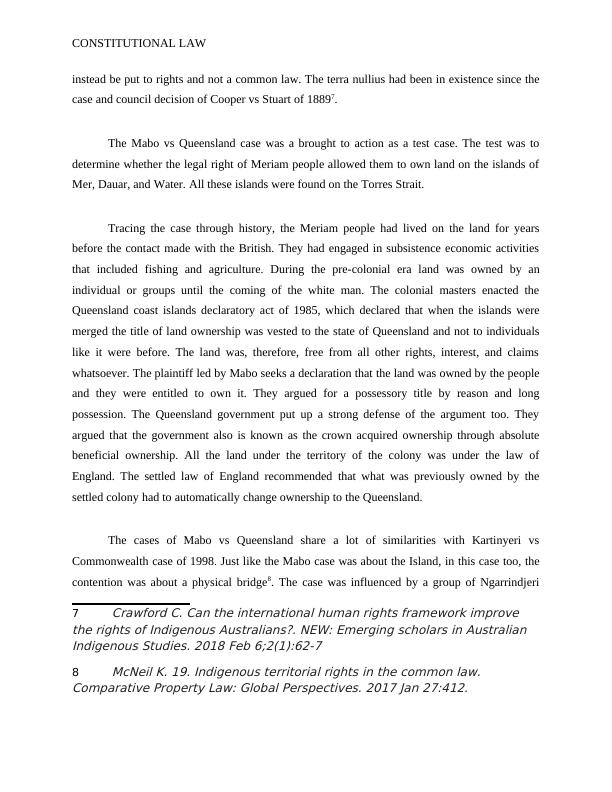Mabo v Queensland: A Landmark Case in Constitutional Law
This is a feedback form for assessing an essay on Federal and State Constitutional Law.
16 Pages4780 Words7 Views
Added on 2022-12-22
About This Document
This essay discusses the Mabo v Queensland case, a landmark case in constitutional law that challenged the notion of terra nullius. It compares and contrasts the findings of this case with the Kartinyeri v Commonwealth case. The essay explores the relevant facts, the questions addressed by the courts, and the legal principles enunciated in both cases.
Mabo v Queensland: A Landmark Case in Constitutional Law
This is a feedback form for assessing an essay on Federal and State Constitutional Law.
Added on 2022-12-22
ShareRelated Documents
End of preview
Want to access all the pages? Upload your documents or become a member.
The Mabo v Queensland (No 2) Case
|10
|2044
|246
Study of MABO Case Judgement
|9
|2637
|434
HLSZ120 Indigenous Health and Culture Assignment 2022
|4
|743
|22
Business Law- Mabo Case (Doc)
|8
|2139
|250
The Native Title Act Research Paper 2022
|10
|2102
|32
The Mabo Decision and the Native Title Act: Benefits and Shortcomings
|7
|2142
|269




